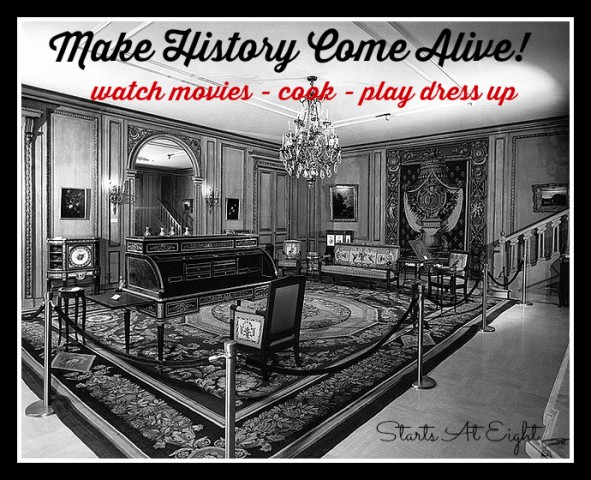Make History Come Alive!
History involves past events and deceased personalities but there are many ways to make it come alive for young learners. Long lectures on foreign topics are boring for students of all ages. However, making history come alive by cooking, playing dress up, and attending museums are activities kids and adults can appreciate.

History teaches the past, but it is important to keep young learners focused in the present with theses fun activities! It will help them to more easily learn and retain the history you are trying to teach them.
1. Play Dress Up
What was it like to be among the female soldiers in the Civil War? What was it like to be a pilgrim? Have kids play dress up while learning about a personality or individual from a particular period.
Have students take note of comparisons and contrasts and explain. For example, pilgrims, lacking dye for cloth, wore drab clothing as compared to the selection found at today’s shopping malls.
2. Prepare Foods
Prepare a dish from a particular time, discussing ingredients and methods of preparation. Did those living in time of the Civil War have microwaves?
Find sites, like Restaurant-ing through History, to find selections from the past. Have kids observe the range of choices and additions (fast food) not available generations ago. What would life be like if fast food restaurants and ‘snacks’ were eliminated?
3. Take a Trip
Use online resources to find a museum in your area. Have children create a chart noting each exhibit and one thing learned from each painting, artifact, fossil, etc.
Use the facts to create a test, and quiz the student, with an 80% or above granting a trip to the museum gift shop.
4. Conduct an Interview
Have students identify a historical figure, read about the personality, and prepare questions for an ‘official’ interview. Have an adult act as the personality and answer the child’s questions.
Afterward, have the child arrange the answers to write a newspaper article about the individual. The activity combines speaking, listening, reading, and writing.
5. Recreate a Scene
Use toy logs, LEGOs
, or a variety of crafts to create a diorama of a historical event. It could be a battle, presidential commencement, or freedom rally. Have students use a picture from a History book or recreate a scene based on gathered research.
Have students describe people, the arrangement of elements, the choice of colors, etc.
6. Watch a Movie
Television can be a tool for learning when young children watch documentaries or historical dramas rather than sitcoms and cartoons. Select a proper Netflix category or rent a video or DVD from your local library.
Have the student answer questions during the film to keep focus. Visual learners prefer watching television, which makes DVDs and streamed content useful for the classroom.
7. Change History
Have students select events and change history by writing how they would do things differently. To make things more interesting, present them with super powers to reverse natural disasters, the decisions of historical personalities, and outcomes of battles.
Have the child discuss why they chose particular events and why they decided to alter the course of history.
Author Bio:
Patricia Wright is a mom and town historian. She loves to make history come alive for her children, and then she shares what works for her by writing about it. You can read her illuminating articles on a number of websites and blog sites.


